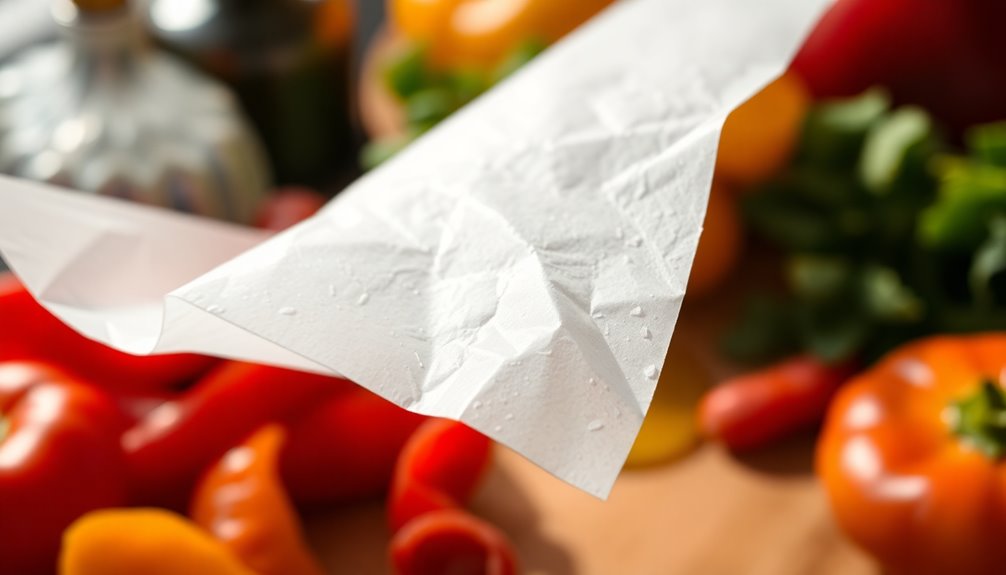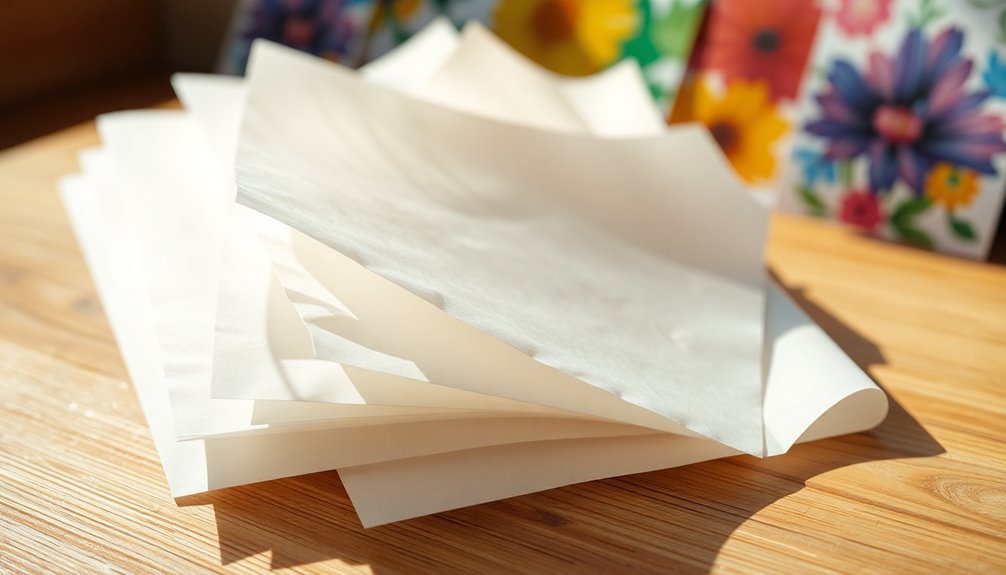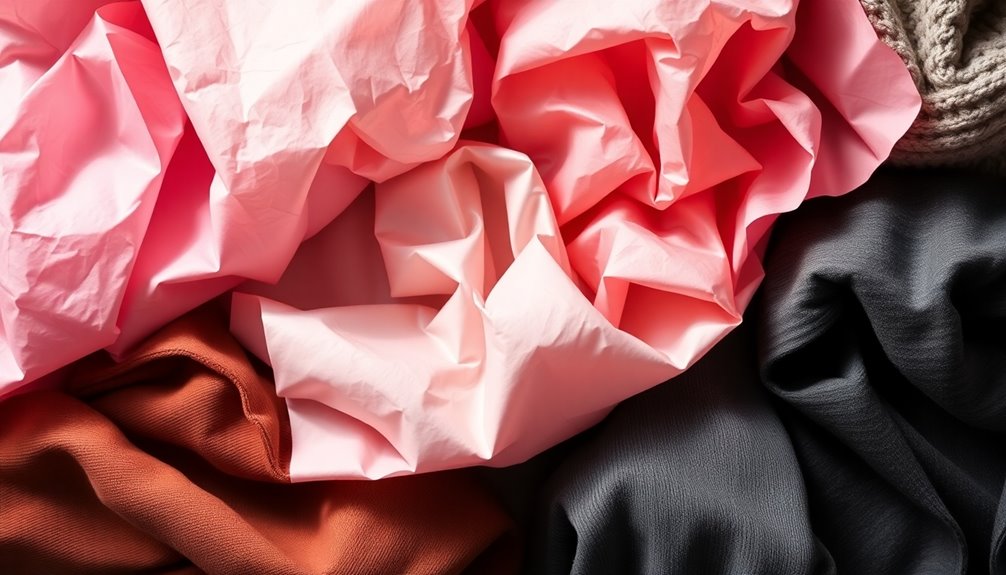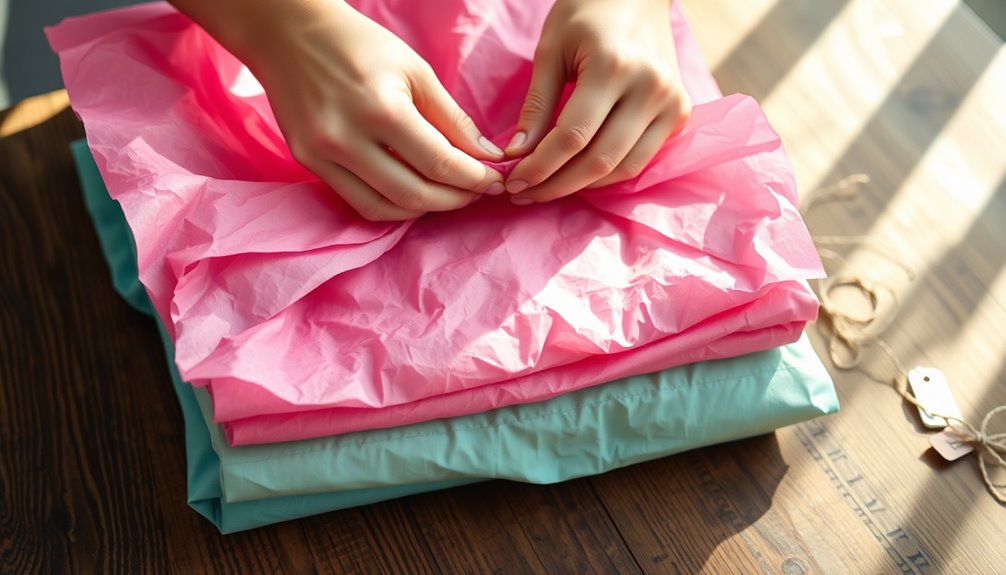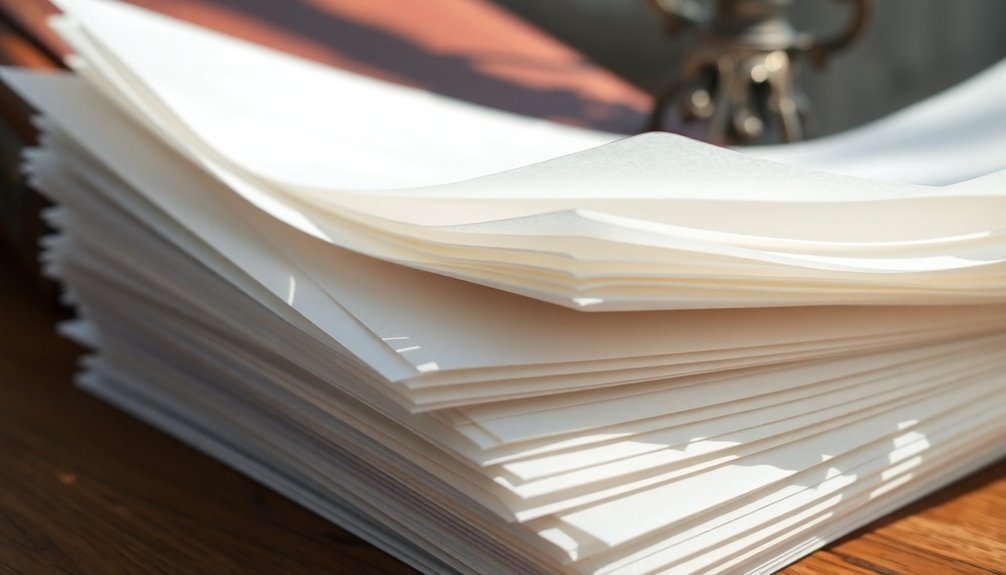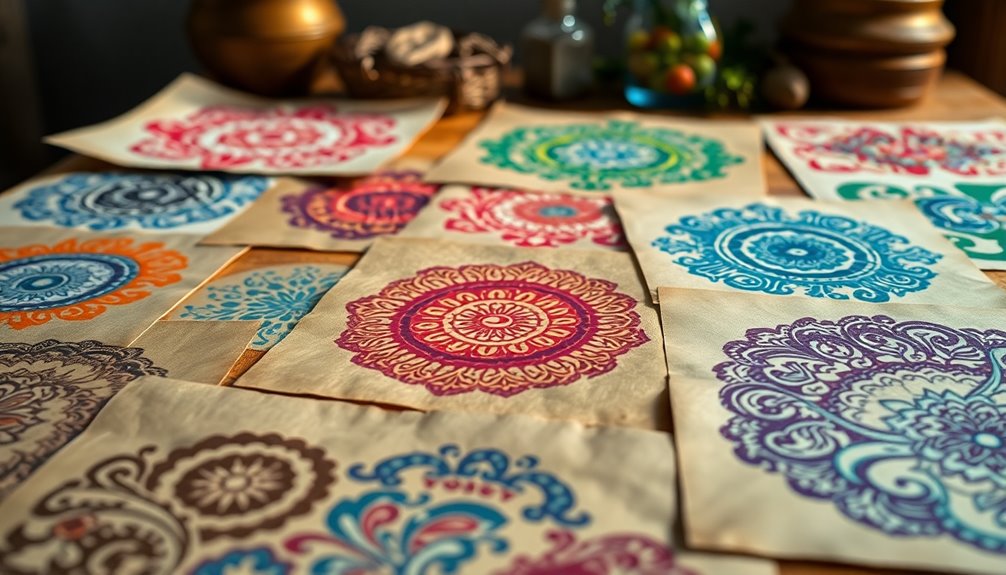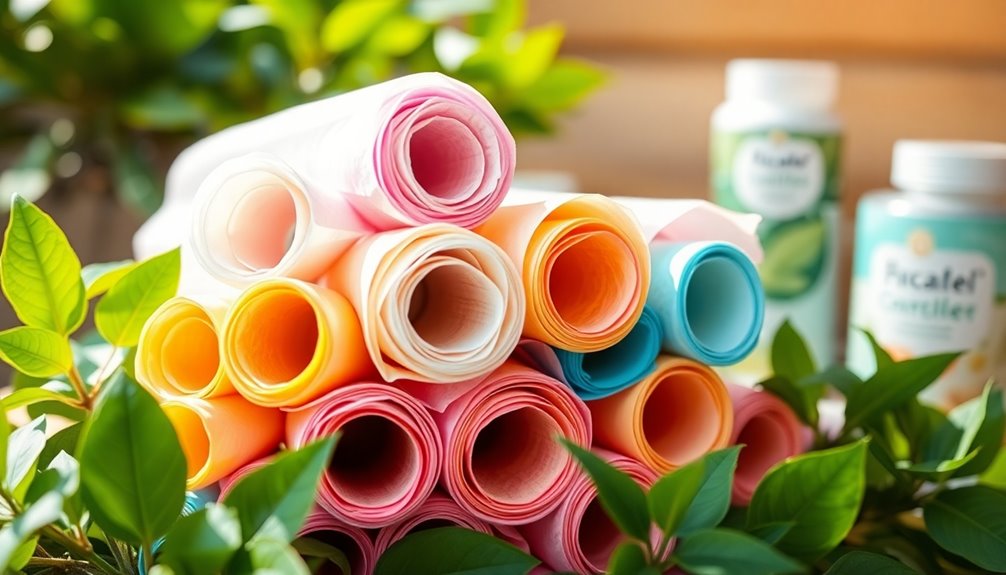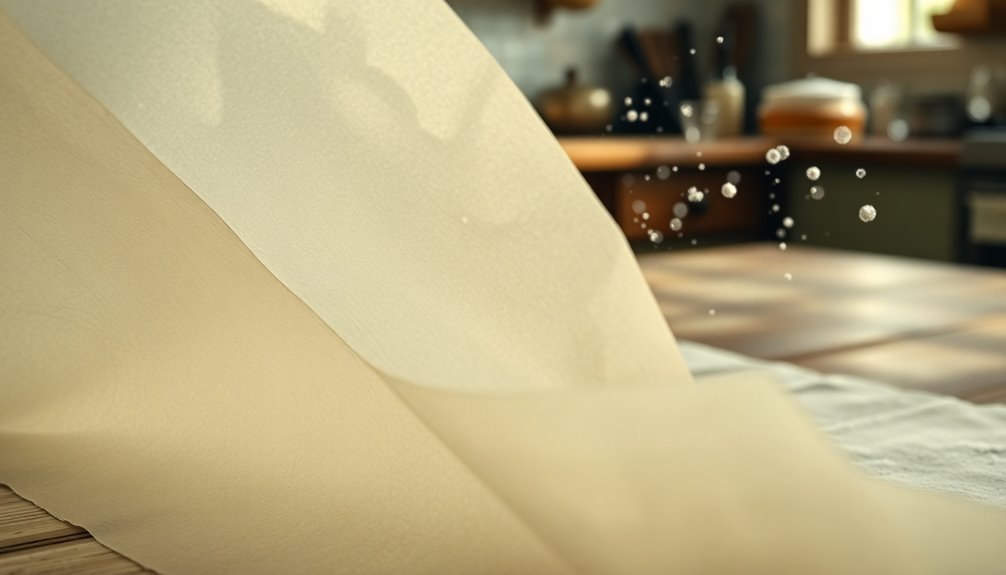Greaseproof paper is a specially treated material that protects your food from grease and oil. It's perfect for wrapping fatty foods and lining baking trays, although you'll need to add grease for non-stick purposes. You'll find different types, such as butter paper and baking paper, tailored for various cooking tasks. While it's safe for short-term storage and microwave use, remember it's not heat-resistant, so avoid using it in hot ovens. Many brands even focus on eco-friendly options. If you're curious about its many applications and types, there's more to discover.
Key Takeaways
- Greaseproof paper is designed to prevent grease and oil leakage, making it ideal for wrapping fatty foods.
- It comes in various types, including butter paper, waxed paper, and heat-resistant baking paper.
- Common applications include food wrapping, layer separation in baking, and short-term food storage.
- While not suitable for high-temperature baking, true baking paper can withstand temperatures up to 220°C.
- Many greaseproof paper options are biodegradable and sourced from sustainable materials, promoting environmental responsibility.
Definition and Purpose
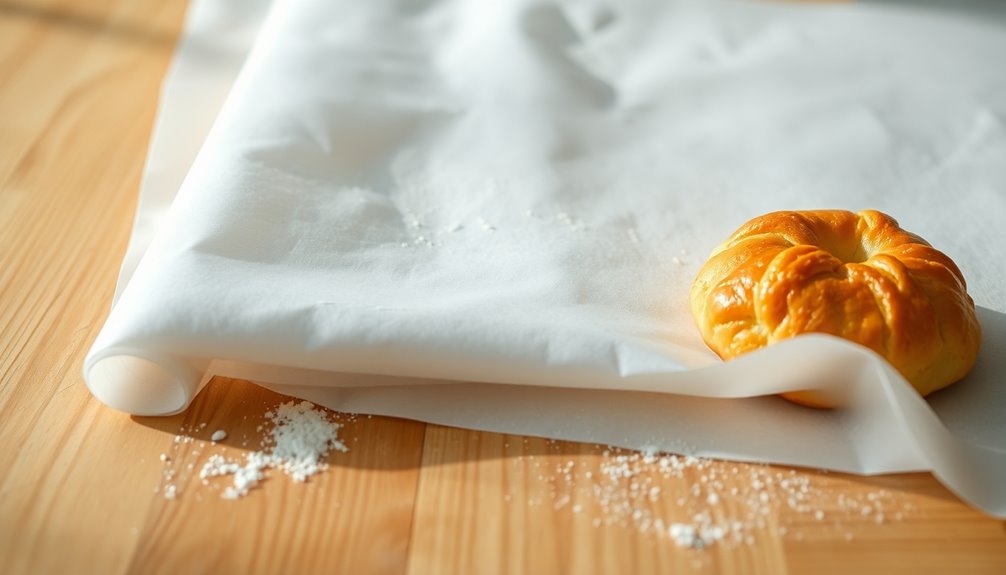
Greaseproof paper serves an essential purpose in food packaging and preparation, providing a reliable barrier against grease and oil. This type of paper is treated or coated, making it ideal for wrapping food, especially fatty items that might otherwise leak grease.
When you're baking, using greaseproof paper can help line baking trays, ensuring that your treats release easily without sticking to the surface. Unlike baking paper, greaseproof paper doesn't come with a silicone coating, so you'll need to add some grease for a non-stick surface.
It's available in various sizes and thicknesses, allowing you to choose the best fit for your food needs. Although it can withstand certain temperatures, keep in mind that it's not as durable as baking paper under high heat.
When using greaseproof paper, you can maintain the quality and freshness of your food during storage, ensuring your meals taste their best. Additionally, many varieties are tested for food safety compliance and can be biodegradable or recyclable, depending on how they're produced.
Types of Greaseproof Paper

When it comes to food preparation and storage, various types of greaseproof paper can meet your specific needs. One common option is butter paper, which offers a non-stick surface ideal for protecting chopping boards and wrapping fatty foods.
However, don't use it for baking since it lacks heat resistance. Waxed paper is another choice; it's coated with wax and provides a moisture barrier, making it great for cold food items. Just remember, it shouldn't be used in baking, as it can melt or emit smoke.
Baking paper, also known as parchment paper, is your go-to for heat-resistant applications. It's greaseproof, non-stick, and can withstand temperatures up to 220°C, making it perfect for various cooking techniques, including baking and steaming.
For enhanced performance, consider SAGA baking paper. This version features a silicone coating on both sides, allowing it to be used for boiling and microwaving as well. Plus, it's biodegradable and compostable, promoting sustainable practices.
Common Uses and Applications

While there are many options for food storage and preparation, greaseproof paper stands out for its versatility in various culinary applications.
It's often used in the food industry to wrap items like cheese, butter, and fatty foods, preventing grease penetration and maintaining freshness. When it comes to baking and cooking, it's ideal for lining trays and pans, although you'll need to grease both sides to keep food from sticking.
Here are some common uses for greaseproof paper:
- Wrapping: Perfect for packaging takeaway meals and catering items.
- Layer Separation: Great for keeping layers of baked goods intact and avoiding moisture loss.
- Storage: Provides a moisture barrier for short-term food storage, keeping items fresh.
- Microwave Use: Can be safely used in the microwave for reheating or cooking.
Whether you're baking cookies or storing leftovers, greaseproof paper is an economical and practical choice.
Its ability to handle various food types makes it a staple in both home kitchens and professional settings.
Heat Resistance and Safety
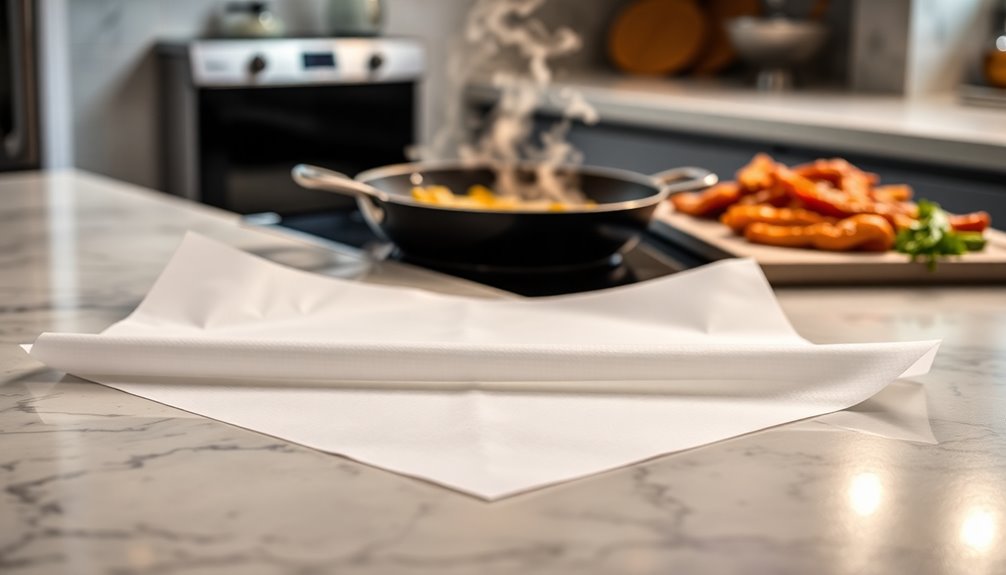
If you're considering using greaseproof paper for your baking or cooking needs, it's important to understand its limitations regarding heat resistance and safety.
While greaseproof paper is great for wrapping and storing food, it isn't heat-resistant. It shouldn't be used in ovens, as it may not withstand high temperatures, creating potential fire hazards.
Typically, greaseproof paper can endure temperatures up to 100°C (212°F), but if you exceed this limit, you risk melting or degrading the paper. This could lead to the contamination of your food, which defeats the purpose of using it in the first place.
Additionally, greaseproof paper requires greasing on both sides to prevent sticking, making it less effective for baking delicate items compared to non-stick baking paper.
For your safety, always check the specific temperature limits and intended applications of greaseproof paper before use.
If you plan to bake at higher temperatures, consider using true baking paper instead. This guarantees peak performance and keeps your culinary creations safe and delicious.
Environmental Considerations
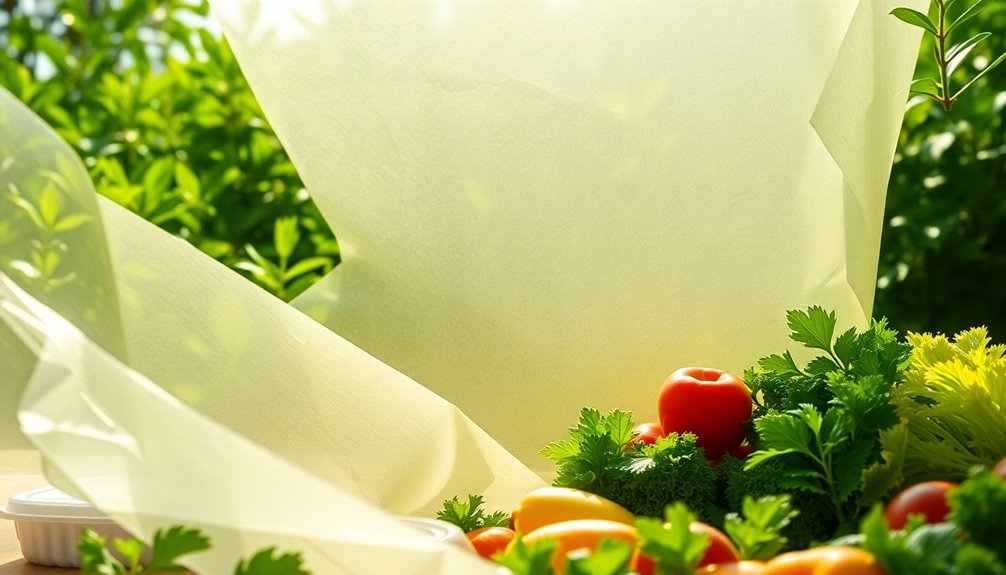
In today's world, considering the environmental impact of your kitchen supplies is essential, and greaseproof paper offers some promising options.
Many brands prioritize sustainable materials and eco-friendly practices, making it easier for you to choose products that align with your values. When you opt for biodegradable greaseproof paper, you're contributing to a greener planet while maintaining food safety standards.
Here are some key benefits of using eco-friendly greaseproof paper:
- Biodegradable: Breaks down naturally, minimizing landfill waste.
- Sustainable: Often sourced from responsibly managed forests, reducing deforestation.
- Food Safety: Complies with regulations to guarantee no harmful substances leach into your food.
- Waste Reduction: Helps keep your food fresh, which can lead to less food waste.
Frequently Asked Questions
What Is Greaseproof Paper Called in the US?
In the US, you'll often hear greaseproof paper referred to as "parchment paper" or "baking paper."
These terms reflect its non-stick and heat-resistant properties, making it perfect for baking. While many people use "greaseproof paper" and "parchment paper" interchangeably, it's good to know that true greaseproof paper doesn't have the silicone coating that parchment does.
Additionally, "bakery paper" is another term you'll come across for food wrapping and storage.
Is Greaseproof Paper the Same as Parchment Paper?
No, greaseproof paper isn't the same as parchment paper.
While greaseproof paper resists grease and is great for wrapping fatty foods, parchment paper is coated with silicone, making it non-stick and heat-resistant.
You'd use parchment paper for baking to prevent sticking, while greaseproof paper is better suited for cold food applications.
What Is Equivalent to Greaseproof Paper?
When you're looking for something equivalent to greaseproof paper, consider baking paper or parchment paper. Both are non-stick and can handle high temperatures, making them great for various baking tasks.
You might also find butter paper useful for food prep, but it's not heat-resistant. Wax paper's more suited for storage, so steer clear of it in the oven.
SAGA baking paper's another option, combining greaseproof properties with eco-friendliness.
What Can I Use if I Don't Have Greaseproof Paper?
If you don't have greaseproof paper, you've got several good alternatives.
Aluminum foil works well for lining trays, but be sure to grease it to prevent sticking.
Parchment paper is great for baking, offering non-stick qualities.
For cold food, use waxed paper, but avoid the oven.
Silicone baking mats are reusable and heat-resistant, making them perfect for baking.
Finally, a light coat of cooking spray or oil on your pans can help too.
Conclusion
To summarize, greaseproof paper is an essential tool in your kitchen, offering versatility and convenience for various cooking and baking tasks. By understanding its types and applications, you can make informed choices that suit your needs. Remember to take into account heat resistance and safety when using it, and don't overlook the environmental impact of your choices. With a little thought, you can enjoy the benefits of greaseproof paper while being mindful of both your cooking and the planet.

